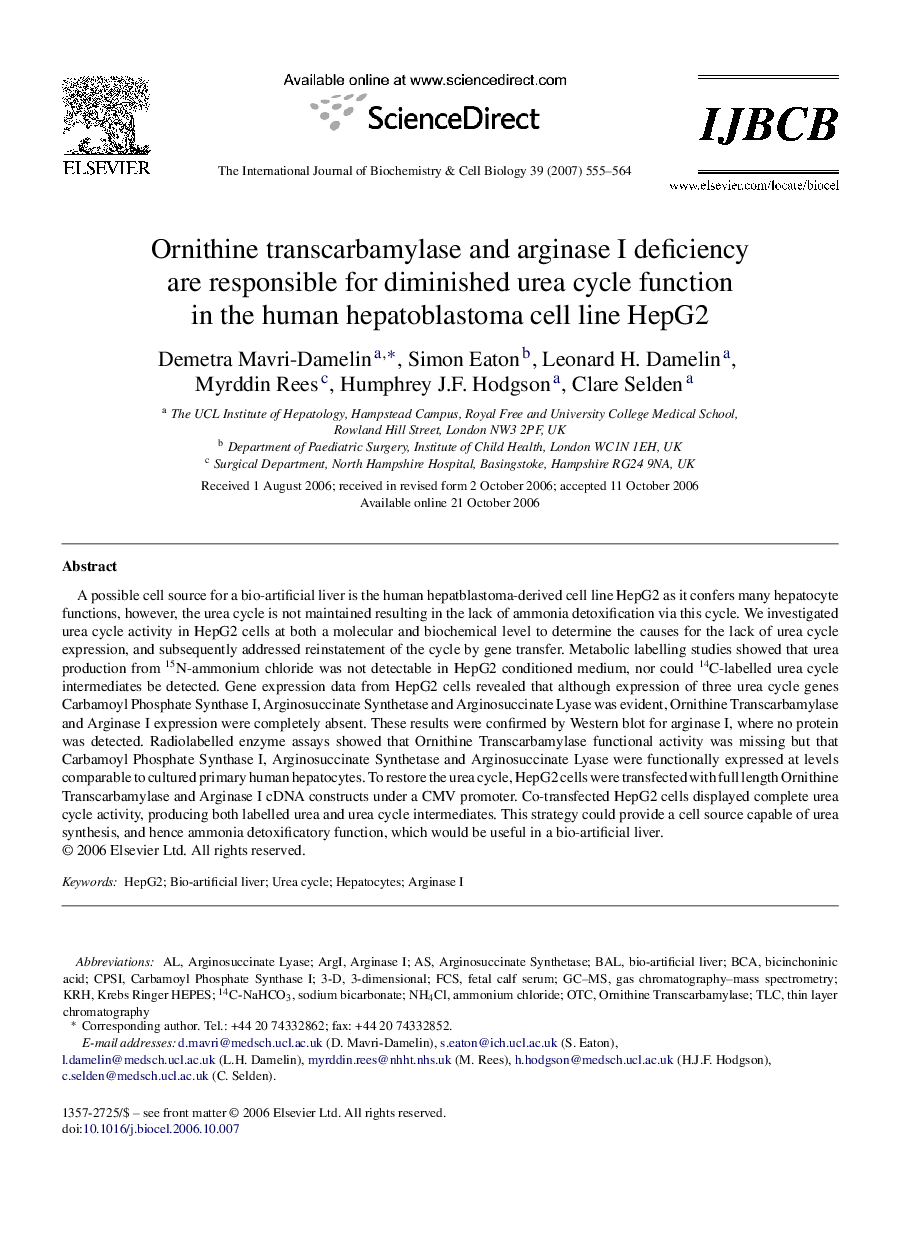| کد مقاله | کد نشریه | سال انتشار | مقاله انگلیسی | نسخه تمام متن |
|---|---|---|---|---|
| 8326561 | 1539977 | 2007 | 10 صفحه PDF | دانلود رایگان |
عنوان انگلیسی مقاله ISI
Ornithine transcarbamylase and arginase I deficiency are responsible for diminished urea cycle function in the human hepatoblastoma cell line HepG2
دانلود مقاله + سفارش ترجمه
دانلود مقاله ISI انگلیسی
رایگان برای ایرانیان
کلمات کلیدی
3-DCPSINH4ClArginase IKRHFCSBALBCAOTCTLCHepG23-dimensional - 3 بعدیGC–MS - GC-MSHepatocytes - hepatocytesbicinchoninic acid - بیسینکنینیک اسیدOrnithine transcarbamylase - ترانس کربامیلاز اورنیتینsodium bicarbonate - سدیم بیکربناتfetal calf serum - سرم گوساله جنینgas chromatography–mass spectrometry - طیف سنجی جرم کروماتوگرافی گازUrea cycle - چرخه اورهbio-artificial liver - کبد بیو مصنوعیthin layer chromatography - کروماتوگرافی لایه نازکAmmonium chloride - کلرید آمونیوم
موضوعات مرتبط
علوم زیستی و بیوفناوری
بیوشیمی، ژنتیک و زیست شناسی مولکولی
زیست شیمی
پیش نمایش صفحه اول مقاله

چکیده انگلیسی
A possible cell source for a bio-artificial liver is the human hepatblastoma-derived cell line HepG2 as it confers many hepatocyte functions, however, the urea cycle is not maintained resulting in the lack of ammonia detoxification via this cycle. We investigated urea cycle activity in HepG2 cells at both a molecular and biochemical level to determine the causes for the lack of urea cycle expression, and subsequently addressed reinstatement of the cycle by gene transfer. Metabolic labelling studies showed that urea production from 15N-ammonium chloride was not detectable in HepG2 conditioned medium, nor could 14C-labelled urea cycle intermediates be detected. Gene expression data from HepG2 cells revealed that although expression of three urea cycle genes Carbamoyl Phosphate Synthase I, Arginosuccinate Synthetase and Arginosuccinate Lyase was evident, Ornithine Transcarbamylase and Arginase I expression were completely absent. These results were confirmed by Western blot for arginase I, where no protein was detected. Radiolabelled enzyme assays showed that Ornithine Transcarbamylase functional activity was missing but that Carbamoyl Phosphate Synthase I, Arginosuccinate Synthetase and Arginosuccinate Lyase were functionally expressed at levels comparable to cultured primary human hepatocytes. To restore the urea cycle, HepG2 cells were transfected with full length Ornithine Transcarbamylase and Arginase I cDNA constructs under a CMV promoter. Co-transfected HepG2 cells displayed complete urea cycle activity, producing both labelled urea and urea cycle intermediates. This strategy could provide a cell source capable of urea synthesis, and hence ammonia detoxificatory function, which would be useful in a bio-artificial liver.
ناشر
Database: Elsevier - ScienceDirect (ساینس دایرکت)
Journal: The International Journal of Biochemistry & Cell Biology - Volume 39, Issue 3, 2007, Pages 555-564
Journal: The International Journal of Biochemistry & Cell Biology - Volume 39, Issue 3, 2007, Pages 555-564
نویسندگان
Demetra Mavri-Damelin, Simon Eaton, Leonard H. Damelin, Myrddin Rees, Humphrey J.F. Hodgson, Clare Selden,